Enhancing Soft Skills for DevOps Engineers: Essential Non-Technical Skills to Thrive
Conclusion
A Week By Week Checklist of Skill Building
Welcome to your DevOps soft skills practice guide. Over the next six weeks (and beyond), you’ll build critical non-technical skills like communication, leadership, trust, and time management. Each week features focused prompts and actionable steps—feel free to dive deeper into any topic that resonates with you.
Note
Adapt this roadmap to your team’s context and your personal goals. Use it as a springboard for deeper research, peer feedback, and real-world application.
At a Glance: Weekly Focus
| Week | Skill Area | Key Activities |
|---|---|---|
| 1 | Communication | Active listening, clear & concise writing (7 C’s) |
| 2 | Leadership & Empowerment | Delegation, feedback loops, vulnerability for psychological safety |
| 3 | Building Trust | Honest retrospectives, sharing lessons, working agreements |
| 4 | Collaboration | Knowledge-sharing sessions, learning circles, pair/mob programming |
| 5 | Prioritization & Time Management | Time blocking, Pomodoro, visual priority boards |
| 6 | Continuous Learning & Growth | Personal learning plans, milestone tracking, certification choices |
| 7+ | Reflection & Next Steps | Progress reviews, new goal setting, advanced topics (negotiation) |
Week 1: Communication
Mastering effective communication sets the foundation for every DevOps team.
- Active Listening: Absorb and confirm understanding.
Example:
“Problems with testing? Tell me more about them.” - Clear & Concise Writing: Focus on one of the 7 C’s each day:
- Monday: Clarity
- Tuesday: Conciseness
- Wednesday: Correctness (grammar & spelling)

Week 2: Leadership & Empowerment
Empower your peers and foster ownership.
- Delegate meaningful tasks while offering guidance.
- Celebrate wins and recognize contributions.
- Request feedback:
“I’m refining my leadership style—what could I do differently?”
Vulnerability builds trust and psychological safety in your team.
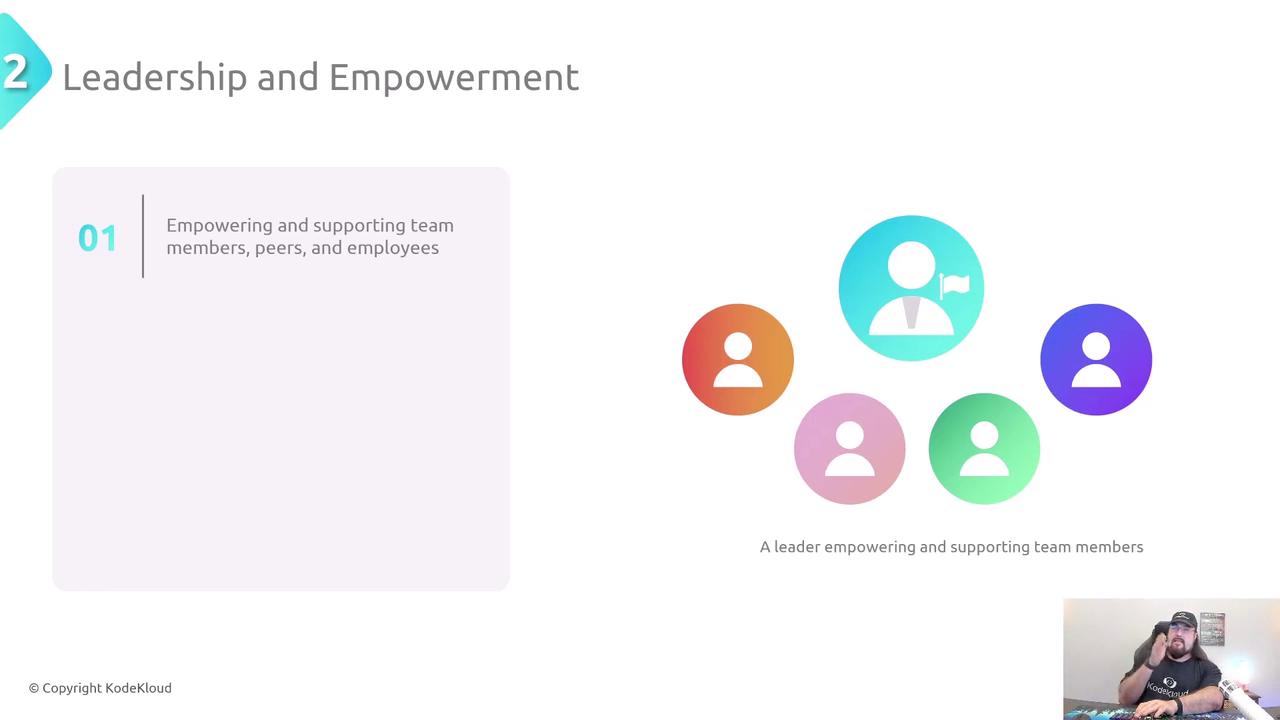
Week 3: Building Trust
Trust is the backbone of high-performing teams.
- Hold honest conversations about challenges and successes.
- Share mistakes and lessons learned in retrospectives.
- Create a working agreement with norms for respect and quality.

Week 4: Collaboration
Translate trust into productive teamwork.
- Host knowledge-sharing sessions (huddles, Discord, Slack).
Prompt: “What’s one insight you discovered this week?” - Launch learning circles focused on software testing, microservices, or Kubernetes.
- Practice pair or mob programming to tackle real issues together.

Week 5: Prioritization & Time Management
Optimize your workflow with proven techniques.
- Time Blocking: Reserve dedicated slots (e.g., two hours) for deep work.
- Pomodoro Technique: 25 min work, 5 min break; after four cycles, take a longer break.
- Visual Board: Keep a live priority board (Kanban or Trello) and share updates with your team.
Warning
Avoid multitasking. Context switching can drop productivity by up to 40%. Stick to one focus block at a time.
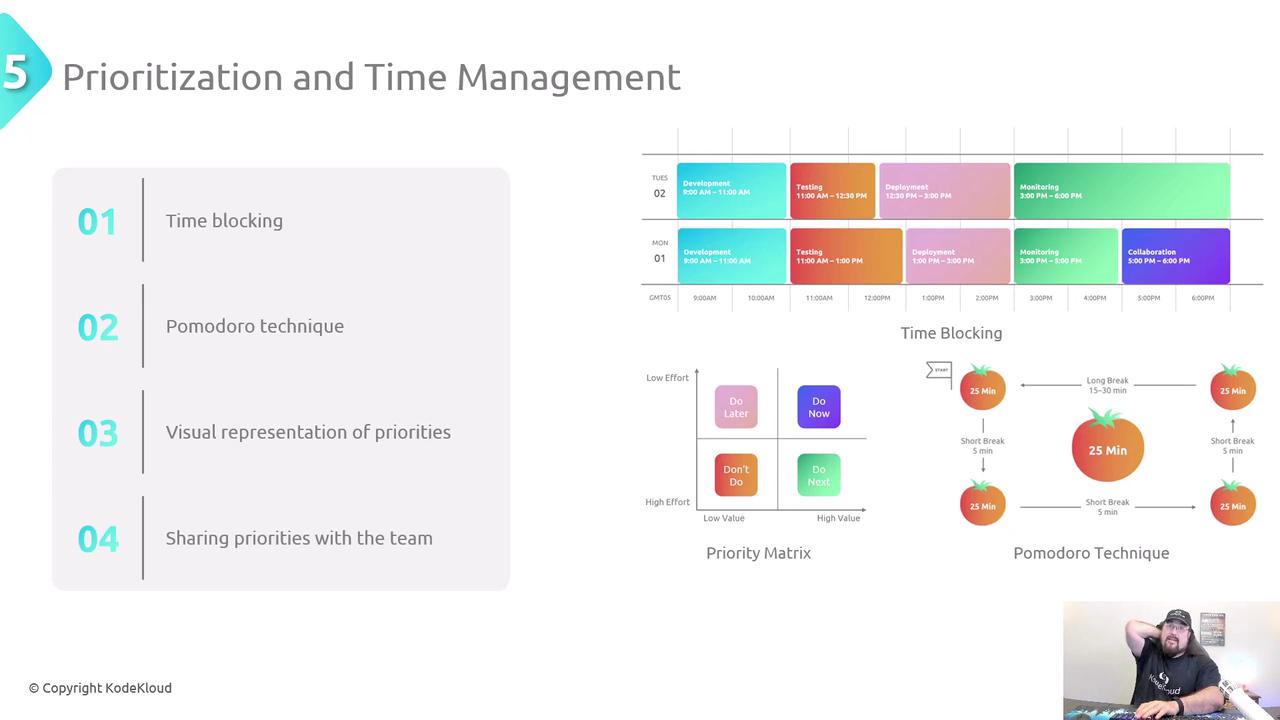
Week 6: Continuous Learning & Growth
Stay ahead in the fast-evolving DevOps landscape.
- Define learning goals: certifications, AI, Kubernetes, new CI/CD pipelines.
- Break goals into milestones (tutorials, hands-on projects, exams).
- Share progress and solicit feedback:
“I’m targeting these certifications—any recommendations?”
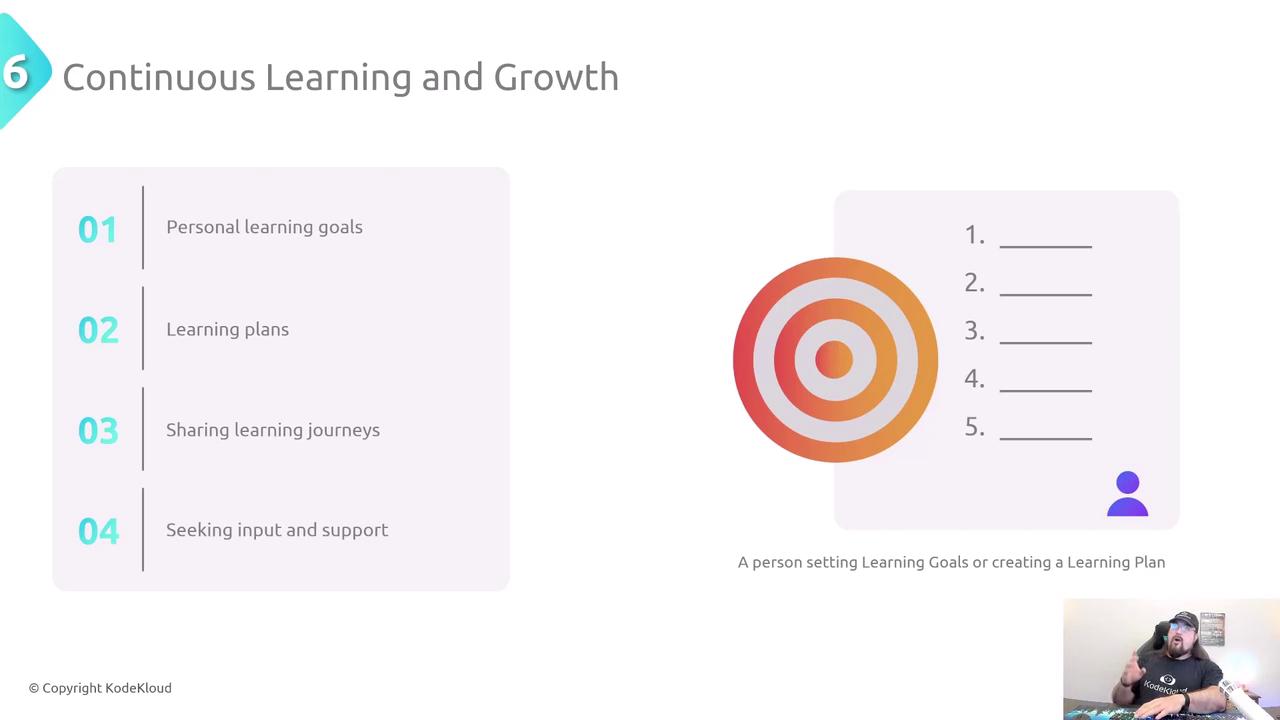
Beyond Week 6: Reflection & Next Steps
Keep momentum by:
- Reviewing your progress and setting fresh goals.
- Identifying skill gaps (e.g., negotiation, client management).
- Committing to ongoing practice and advanced topics.
- “How can I better understand stakeholder needs?”
- “What adds the most value for my clients?”
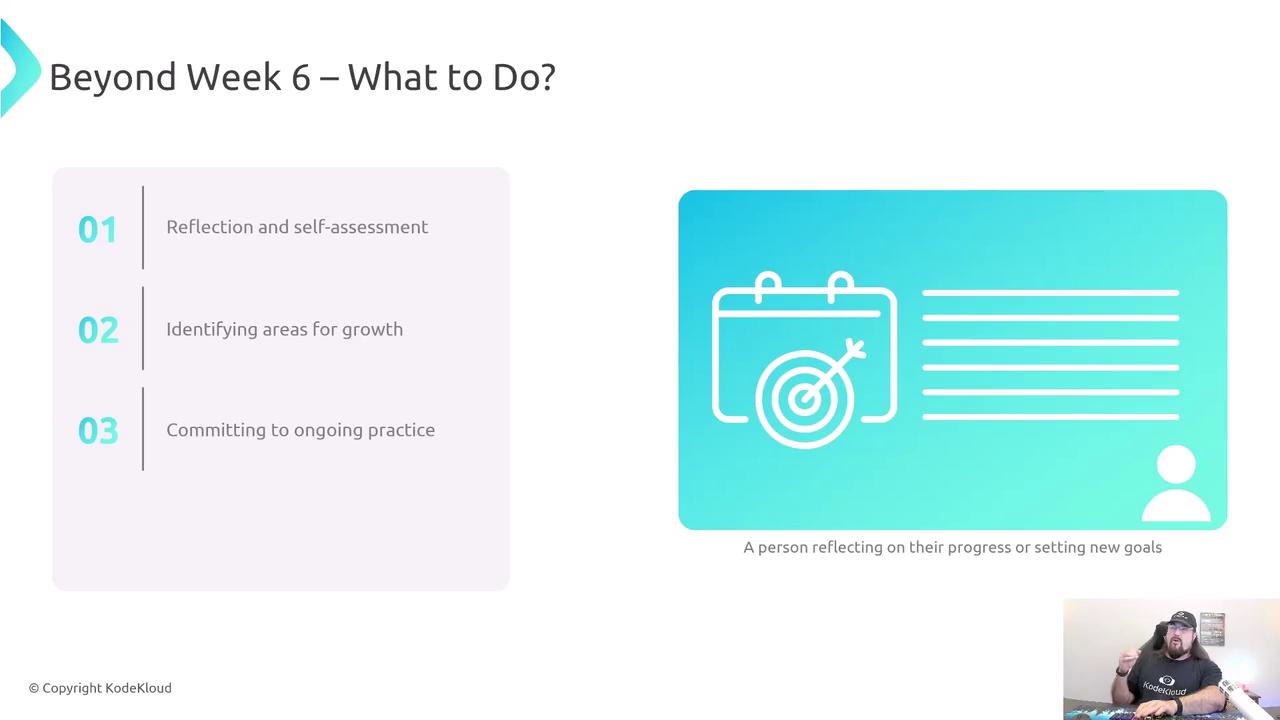
Summary & Resources
You’ve built a flexible, week-by-week blueprint for DevOps soft skills. Tailor it to your context, repeat cycles as needed, and link these skills to your technical mastery.
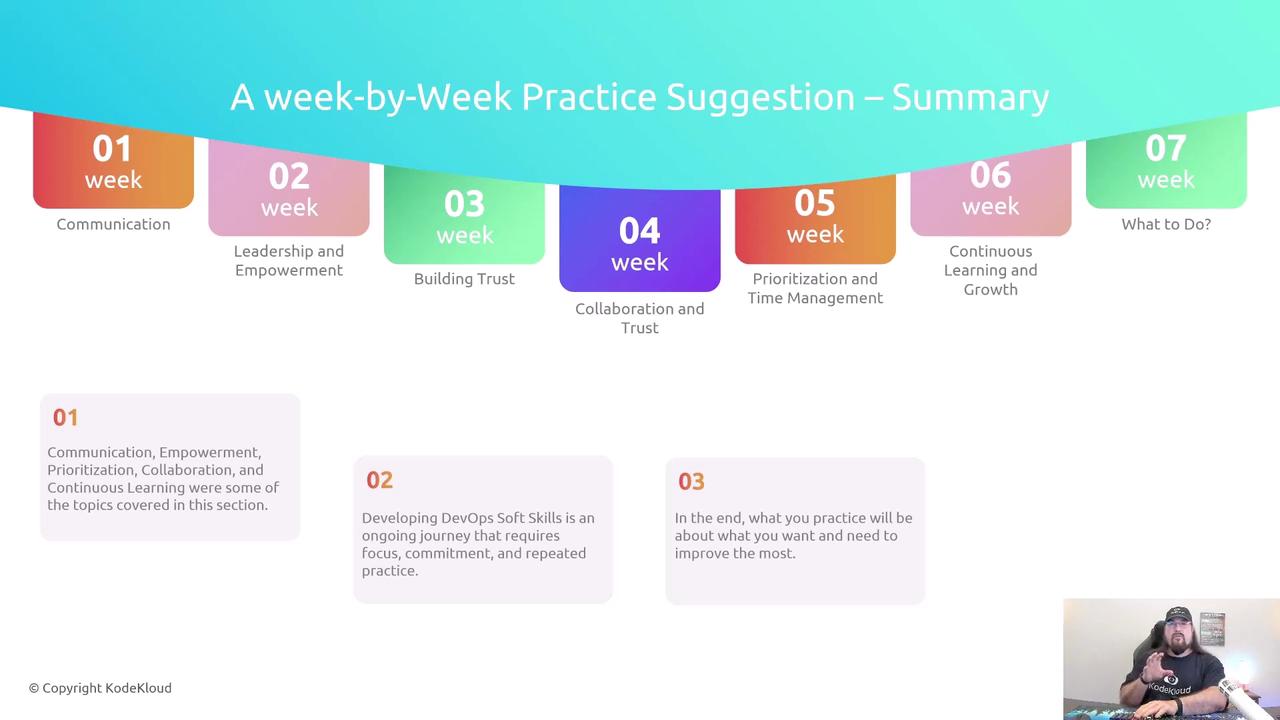
Links & References
Watch Video
Watch video content